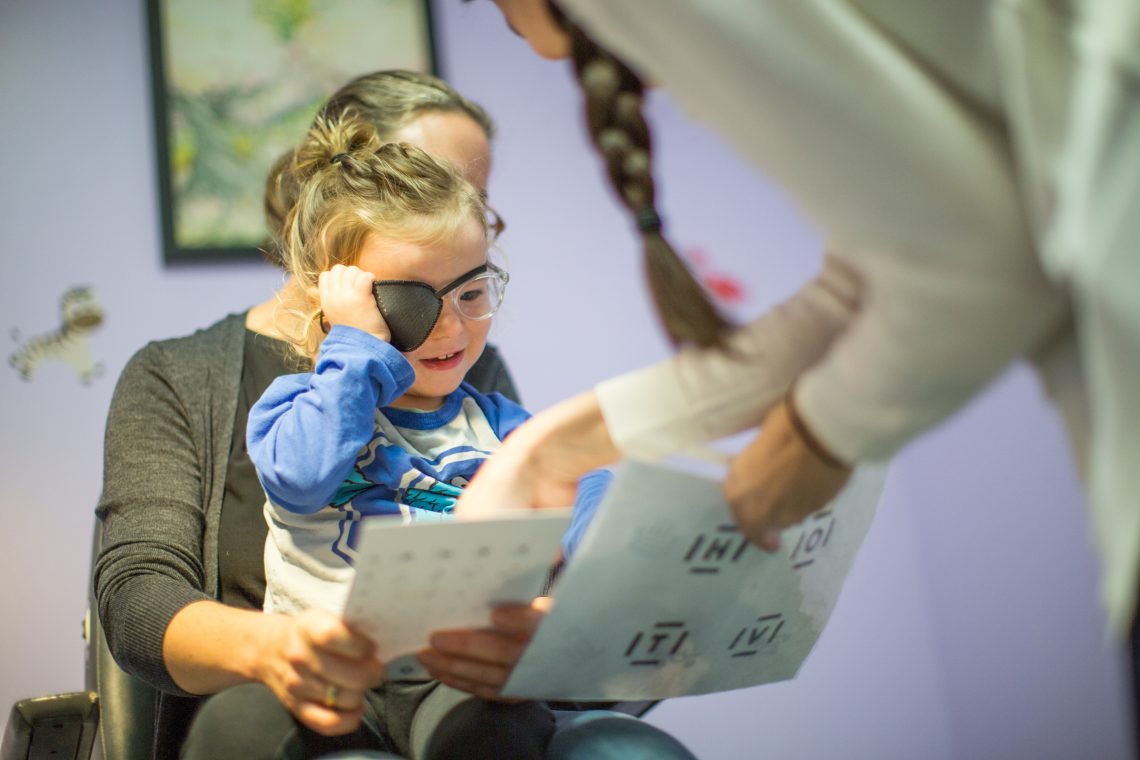
NEW YORK, June 17, 2019 — The maturation of visual acuity in both amblyopia and myopia may be closely associated with the development of pathways signaling bright features in the brain, according to research published in the Journal of Neuroscience by SUNY College of Optometry doctoral candidate Carmen Pons Torres and colleagues in the laboratory of distinguished professor Dr. Jose-Manuel Alonso.
While past research indicated that amblyopia, also known as lazy eye, equally affects the brain pathways signaling bright and dark features in an image, Ms. Pons Torres found that amblyopia affects the perception of bright features more than dark features. Her research also shows that, as amblyopia becomes more severe and the images projected in the eye lose detail, bright targets become increasingly difficult to discern. This recent work opens the possibility to treat amblyopia by strengthening weakened brain pathways that signal bright stimuli.
Amblyopia is a developmental problem of the brain that compromises visual acuity in two to five percent of children around the world. Children typically develop amblyopia in one eye and the current treatment is to patch the healthy eye to force the lazy eye to work harder.
Despite being in use for centuries, such patching treatments are problematic. Amblyopia may go undiagnosed for years and patching is less effective in mature brains, there is a high risk of amblyopia recurrence after patching interruption, and low compliance remains prominent as children often do not like to wear the eye patch and tend to remove the treatment when unsupervised.
Previous work from the Alonso lab published in the Journal of Vision by Pons, et al. has shown that low light and optical blur (e.g. reading indoors under dim light) affect the perception of bright targets more than dark targets. Both low light and optical blur are risk factors in myopia, or nearsightedness, which is another developmental problem affecting visual acuity. Another recent study from the Alonso team published in Cell Reports by SUNY Optometry postdoctoral researcher Dr. Reece Mazade, et al. found that these pathways are best stimulated with large bright long-lasting targets, particularly sky patches, which are bright, large and slow-moving.
Both new findings open the door for further exploration of new treatments that use natural visual stimuli more effectively to promote healthier visual behaviors, including wearable devices that monitor vision outdoors.
###
Significance Statement from the Original Paper in the Journal of Neuroscience
Amblyopia is a loss of vision that affects 2-5% of children across the world and originates from a deficit in visual cortical circuitry. Current models assume that amblyopia affects similarly ON and OFF visual pathways, which signal light and dark features in visual scenes. Against this current belief, here we demonstrate that amblyopia affects the ON visual pathway more than the OFF, a finding that could have implications for new amblyopia treatments targeted at strengthening a weak ON visual pathway.
Abstract from the Original Paper in the Journal of Neuroscience
Visual information reaches the cerebral cortex through parallel ON and OFF pathways that signal the presence of light and dark stimuli in visual scenes. We have previously demonstrated that optical blur reduces visual salience more for light than dark stimuli because it removes the high spatial frequencies from the stimulus, and low spatial frequencies drive weaker ON than OFF cortical responses. Therefore, we hypothesized that sustained optical blur during brain development should weaken ON cortical pathways more than OFF, increasing the dominance of darks in visual perception. Here we provide support for this hypothesis in humans with anisometropic amblyopia who suffered sustained optical blur early after birth in one of the eyes. In addition, we show that the dark dominance in visual perception also increases in strabismic amblyopes that have their vision to high spatial frequencies reduced by mechanisms not associated with optical blur. Taken together, we show that amblyopia increases visual dark dominance by three to ten times and that the increase in dark dominance is strongly correlated with amblyopia severity. These results can be replicated with a computational model that uses greater luminance/response saturation in ON than OFF pathways and, as a consequence, reduces more ON than OFF cortical responses to stimuli with low spatial frequencies. We conclude that amblyopia affects the ON cortical pathway more than the OFF, a finding that could have implications for future amblyopia treatments.
More information about this study may be downloaded here.
Media Contact: Amber E. Hopkins Tingle, 212.938.5607, amber@sunyopt.edu
